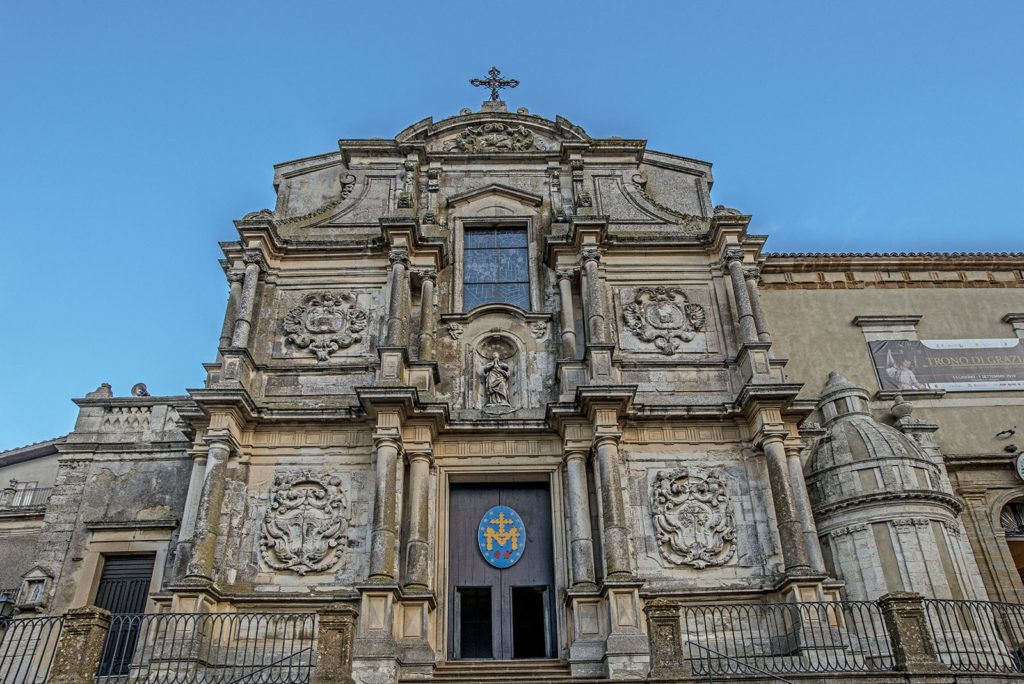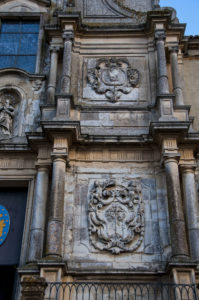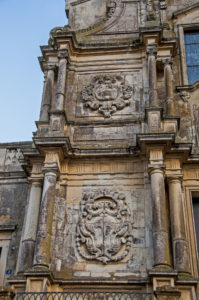Across the bridge of San Francesco, on the square of the same name, stands the majestic church of San Francesco D’Assisi all’Immacolata. The original building was built in 1236 by Beato Riccardo, one of the most devout followers of St. Francis, then enlarged a few centuries later under the supervision of Father Gerardo Arcolaci.
The church was destroyed by the earthquake of 1693, after which it was rebuilt in 1724 in Baroque style, and is preceded by a winding staircase. Some Gothic-style remains of the original structure, characterised by the finish of the local sandstone used in that period, are located in the rooms adjacent to the sacristy and the portal in the cloister.
In 1727, the works were revised by the architects Tommaso Amato and
Francesco Battaglia
, who changed the majestic Baroque stone façade, taking inspiration from
examples from Palermo
, making it one of the most interesting façades in Caltagirone.

Divided into two levels and marked by staggered columns that accentuate the contrasts of light and shadow, it had four niches with Franciscan saints placed in the lateral sections.
These were replaced with four Marian symbols distributed on “
large boards
“, as if to frame the central niche with the statue of the Immaculate Conception. In 1807, a small
apse
with a small dome was built on the right side of the façade.

